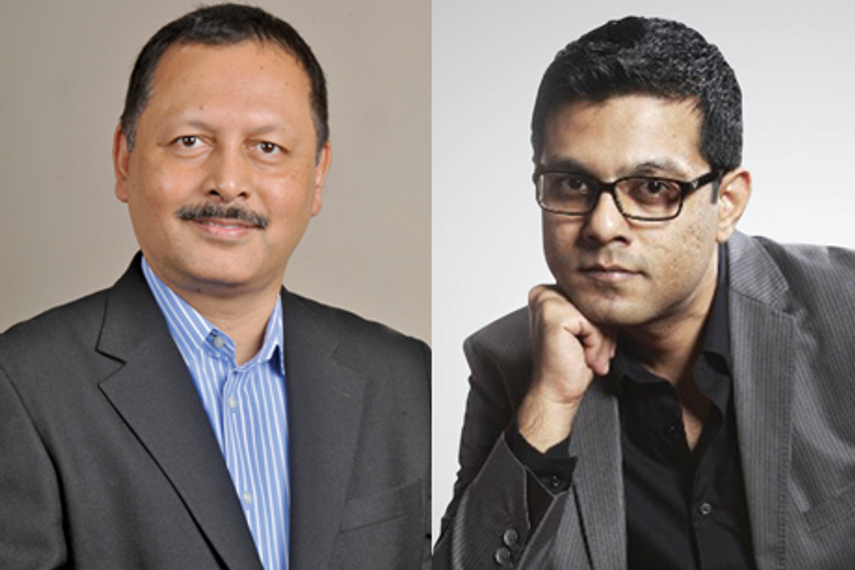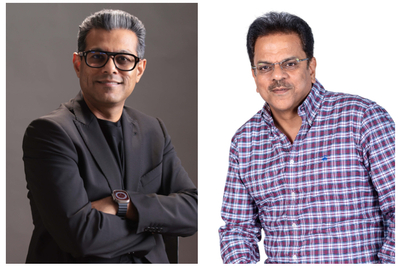
Ranju Mohan, director and business head, JK Ansell (L) and Dheeraj Sinha, chief strategy officer, South and South east Asia, Grey Group (R)
What are the pros and cons of using a head-on comparison featuring a competitor brand?
DS: The pro is that you can certainly get discontinuous attention from the consumer; you can convert that into discontinuous market share if you have something good to offer. While the con is that if you are doing it just for the sake of it and do not have something substantial to offer after the offense, then it will backfire on you and the brand would have wasted its money on doing this.
RKM: I believe that consumers get to know more about what it is and the con is that they still may not be convinced. They may not believe the claims.
How much do consumers believe comparative advertising claims, whether or not it features a competitor’s brand?
DS: By and large consumers do not take any claim on face value. In marketing and advertising, if you tell a consumer ‘100 per cent germ free’ then I don’t think people process information that linearly and believe that it is 100 per cent germ free. Consumers enjoy that somebody has got the guts to disrupt the market and there is some fun happening in the category for a change. The consumer will get shaken up at least - if he hasn’t changed his tooth paste for a long time then he will begin to think about it. Things like this act as a good instance of shaking it up but whether you can convert the person to your brand depends on the proposition you have to offer. The Pepsi and Coke fight is seen as an interesting fight from the consumer point of view.
RKM: It has an impact if it comes from a reasonably strong house of brands. It definitely makes an impact then, because that’s what the consumer will believe in. If it comes from a new brand – I think it will take its own time. But if it comes from a legacy house of brands and what they stand for, then it definitely enables the consumer to believe.
Is head-on advertising featuring a competitor’s brand a good way to project one’s brand alongside the market leader (or a brand one wishes to position themselves against)?
DS: It depends on the DNA that your brand has. Are you an upstart brand? So an Air Asia takes on competition, it’s them as that’s the kind of brand they are. If Tata would take on competition head on – it will look a bit strange. It depends on what kind of brand you are. Does this strategy go with your brand DNA? It also depends on the category you are playing in. Is it a category of high noise with innovation happening? Then it may not make sense. But if it’s a category where not much has happened and things are placid then to shake up things it might make sense. It also depends on what do you have to offer, just for the sake of upsetting things you cannot undertake competitive advertising. But if you have something solid to back it with then it makes sense. There are two or three criteria which have to be thought through before you do it.
RKM: From a brand marketing perspective, you should be very clear on against whom you are taking a stand. The number one will always have a strong position. If you want a position that is differentiated, either you have a great new idea that is differentiated or you say ‘I am so many times better’. But saying ‘so many times better’ is a sharp sword that can cut anyways because someone can always come and say that I am xyz per cent better than you. Nobody can stop them from claiming that. So that’s the challenge when you give a number to any efficacy or functional benefit. But is it effective? Then the consumer is a judge. It is a contextual thing which works along with what story you want to tell.
DS: You will typically see in FMCG that when one player becomes a big market share holder and it becomes very difficult to shift the market game, brands resort to such tactics. It could happen in airlines, but I don’t see this happening in fashion because it is an imagery-driven business. But in a business that is more functionality-driven, there are chances of seeing this far more often.
RKM: In most of the categories, there is always some reference of competitive advertising. Everyone looks for ways to create a different kind noise at certain times and you look for ideas across categories and then you think, “Let’s try this out?” And you expect it to work. But I think it is more about what you do than what you communicate.


.jpg&h=268&w=401&q=100&v=20250320&c=1)
.jpg&h=268&w=401&q=100&v=20250320&c=1)
.png&h=268&w=401&q=100&v=20250320&c=1)

.jpeg&h=268&w=401&q=100&v=20250320&c=1)
.png&h=268&w=401&q=100&v=20250320&c=1)
.png&h=268&w=401&q=100&v=20250320&c=1)

